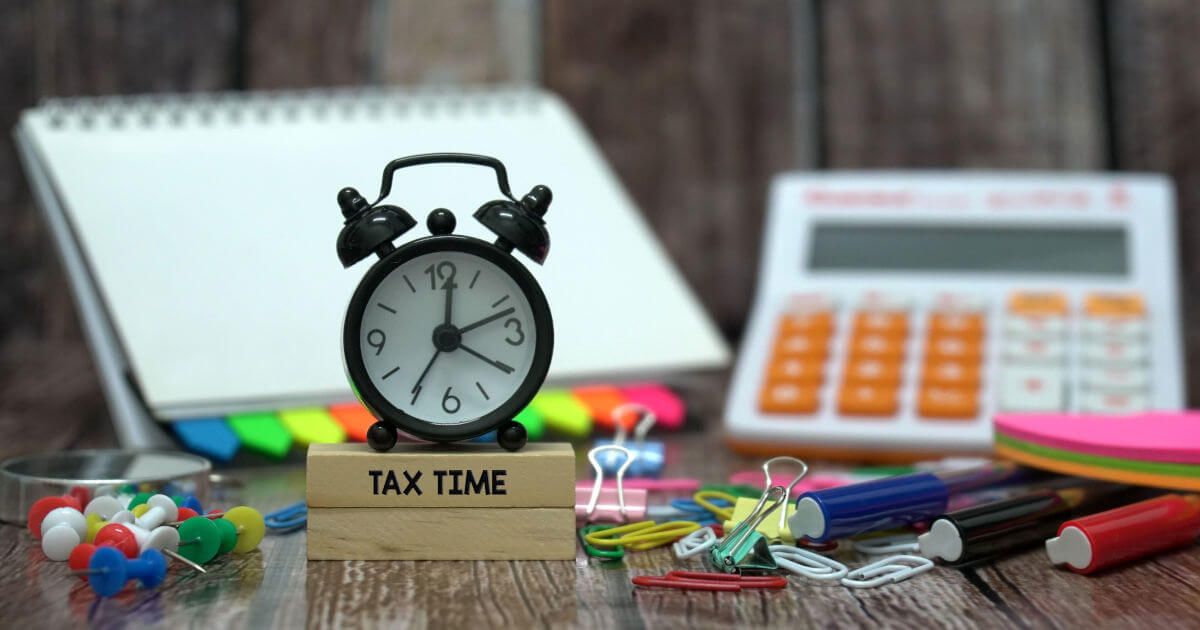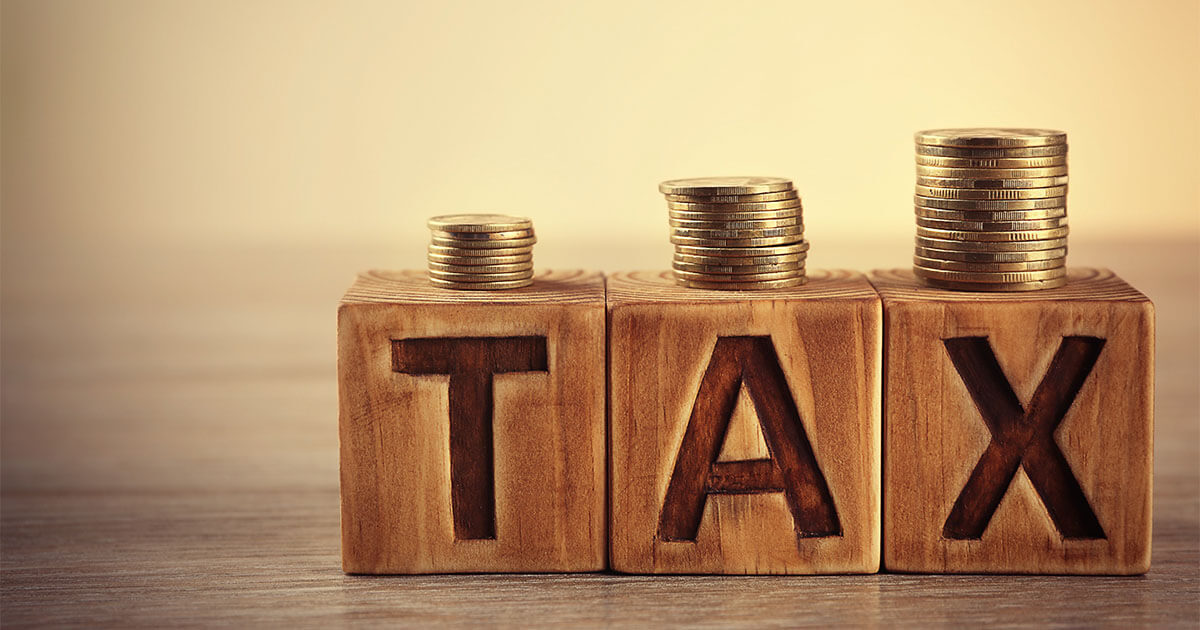Saving taxes – a guide for the self-employed
For people who are self-employed, being well-versed in taxation basics is always worthwhile, particularly because the right knowledge helps you save a lot of money. What taxes need to be paid, and how they are reduced, depends on the form of self-employment, as there are different tax deductions for business owners and sole proprietors or freelancers.
In this text, we will address and clarify the most important tax questions: What exactly can traders and freelancers deduct from their taxes? Are there other rules for business owners? We provide an overview of what taxes can be incurred, and how self-employed people can save in our 10-step guide to tax.
Different forms of self-employment at a glance
Freelancer, sole proprietor, or business owner? One of the most important questions that arises when starting a business is what category of self-employment you fall under. It is also important because it is also determines which taxes are generated and how you can save money as a self-employed person. The following section explains how different independent work fields are distinguished from one another.
Freelancer, sole proprietor, or business owner?
In the USA, you can be taxed by the federal and/or state government as either a freelancer/sole proprietor or a business owner if you are self-employed. As a business owner, you are liable to pay business taxes, including income tax, estimated taxes, self-employment tax, employment taxes, and excise tax. If you are the sole proprietor of your business or trade, you are an independent contractor, or you are a member of a trade or business partnership, you are required only to pay self-employment tax, as well as income tax. As a freelancer, you also only have to pay self-employment tax, consisting of social security and Medicare taxes, as well as income tax.
As a self-employed person, you need to file your annual tax return and pay estimated taxes on a quarterly basis. It is important to work out your net profit or net loss for the year before you begin filing your tax returns, so that you can find out whether you are required to pay both self-employment and income tax (in some instances, it is not a requirement to pay income tax on annual earnings of $400 or less). You will then also be able to discern which forms you are required to complete and file.
Tax tips for freelancers and sole proprietors
What exactly is a freelancer? A freelancer is a self-employed person who works for different employers for different lengths of time. They rarely have a fixed employment relationship, instead accepting orders and contracts from companies and customers and performing them on a fee-paid basis. Some work independently and others are represented by a freelance agency. In terms of taxation, the IRS designates self-employed people as independent contractors. It is important to be able to identify yourself as such, and ensure that any contracts you sign or dockets you receive include this title – some employers will attempt to categorize you as an employee or vice versa, and this can lead to problems when filing taxes later down the line.
How about a sole proprietor? A sole proprietor owns an unincorporated business by themselves – basically a freelancer who has their own business operation rather than one who is represented by an agency. You cannot be considered a sole proprietor if you are the only member of an LLC and treat it as a corporation.
Taxes you may incur
To understand how to save on taxes as a self-employed person, you must know which taxes you are required to pay. Here is an overview of the most important tax categories that can be applied to self-employed people.
Income tax
Regardless of whether you are a self-employed person, or an employee, everyone is obliged to pay income tax. This tax relates to the taxable profit made by a self-employed person (annual surplus). This is often the most important tax for the self-employed, as many company expenses can be deducted from income tax. If you can reduce your taxable profit, you reduce your tax liability. When filing for income tax, you will need to submit form 1040, U.S. Individual Income Tax Return, and either Schedule C (form 1040), Profit and Loss from Business, or Schedule C (form 1040) Net Profit from Business. If you operate more than one venture, you must submit a C form from each revenue source.
Estimated taxes
Estimated taxes are additional income taxes that must be paid for any additional income such as interest, dividends, alimony, capital gains, prizes, and awards. Sole proprietors and freelancers must pay estimated tax if they predict their tax payments to be more than $1000. Estimated tax can be worked out using form 1040-ES. Estimated taxes are paid quarterly.
Self-employment (SE) tax
This is a tax which combines social security and Medicare taxes and deducts them from your net income. SE tax is not paid by those that are traditionally employed, as those taxes have already been automatically deducted. SE tax means that self-employed people can also avail of social security benefits, such as retirement benefits, disability benefits, survivor benefits, and Medicare (hospital insurance) benefits. SE tax must be paid by those self-employed people whose earnings exceed $400, or those who obtained a church employee income of $108.28 or more. The SE tax rate is currently at 15.3% of your income. If you are liable to pay self-employment tax, then you must fill out form Schedule SE which is then filed with form 1040.
Federal unemployment tax
Along with state unemployment taxes, this tax goes towards providing unemployment benefits to people who have lost their jobs. You will need to submit form 940, Employer’s Annual Federal Unemployment (FUTA) Tax Return.
Excise tax
Excise tax, similar to sales tax, is a levy applied to specific consumer goods. Good examples include luxury items or controversial products, such as cigarettes or alcohol. Unlike sales tax, excise tax is a flat tax applied to the product before the purchase price, rather than a percentage of the sale price.
As a business owner, sole proprietor, or freelancer, you may have to pay excise tax depending on whether or not you engage in the following activities:
- Selling or manufacturing products that incur excise tax
- Operating certain kinds of business that are considered luxury services, i.e. tanning salons
- Using certain types of equipment, facilities, or products
- Receiving payment for certain types of activities
There are further taxes to be paid if you are involved in the sale of certain chemicals, fuel taxes, heavy vehicle tax, and communications and air transport tax. Excise taxes are filed using form 720, Quarterly Federal Excise Tax Return.
Information returns
As a business owner, sole proprietor, or freelancer, it is your responsibility to submit supporting documents for all your tax filings to the Internal Revenue System (IRS). They will then compare the documents you have supplied to the information on your tax returns to ensure that any and all payment transactions are properly accounted for. There are a number of forms you are also required to include in your submission:
Form 1099-MISC, Miscellaneous Income reports on the following incomes:
- Payments of $600 or above to people not considered employees
- Rental payments of $600 or more
- Prizes or awards of $600 or more
- Royalty payments of $10 or more
- Sales greater than $5,000 to people intending to resell outside of a permanent retail establishment.
form W-2, Wage and Tax Statement will need to be filed if you have employees to record information, such as their wages, tips, with-held income, social security, and Medicare taxes. Every employer engaged in a trade or business who pays remuneration, including noncash payments of $600 or more for the year must file a form W-2 for each employee.
Form 8300, Report of Cash Payments over 10,000 Received in a Trade or Business needs to be filed if you are party to a cash transactions greater than $10,000 in either the US or a foreign currency.
more information about depreciation can be found in the IRS’s How to Depreciate Property guide.
So what exactly do self-employed people need to pay attention to in order to save money as efficiently as possible? Here are 10 tips we have summarized for the self-employed.
10 tips for saving tax when you are self-employed
Reducing taxable profit and saving on your taxes is important for freelancers and sole proprietors to maintain financial strength. Overall, the self-employed enjoy a relatively wide margin of taxation, and have the possibility to deduct a number of expenses from taxation, which above all contributes to them saving on their taxes.
Since operating expenses are not specifically defined in income tax legislation, it is possible to claim many expenditures as tax deductible operating expenses. Typical examples of this would be, for example, travel expenses, advertising costs, catering, work equipment, or company cars. To claim this expenditure in your tax returns, it is of the utmost importance to be able to provide corresponding documents for all expenses in your information returns. This is best practice for all business accounting.
Not all of the tax-related expenses mentioned above can be immediately considered freelance tax deductions or self-employed tax deductions – some goods need a longer period to depreciate. Depreciation is an income tax deduction which permits a taxpaying freelancer or sole proprietor to regain some of the cost of certain property items – essentially an allowance for the use and deterioration of property.
Home office tax deduction
If you run your freelance business from your own home, then you have the option of filing for a number of tax deductions under the Home Office Tax Deductions clause, whether you are a home owner or a renter. While it is unlikely this will be checked, in the event of an IRS audit you will need to be able to prove that your living space is also your work space – that you use it regularly and exclusively, and that it is the principal location of your business. Deductions for a home office are based on what amount of your home is used for your business in terms of percentage. You also need to figure out your home office expenses, such as mortgage interest, rent, utilities, repairs, and depreciation. You will need to fill out form 8829, Expenses for Business Use of your Home. For more information on all home office tax deductions, please refer to Business Use of your Home.
Telephone and internet expenses
Similar to the Home Office tax deduction, you are eligible to claim tax deductibles on your business phone and internet expenses. The only difficulty that can arise in this is similar to proving what portion of your house is used for business purposes – you need to be able to prove exactly which calls and what internet usage was made while carrying out business related activities. You cannot claim deductibles on your entire bill, unless you have a specific work phone. Similarly, you need to be able to work out and prove how much of your time spent online was related to the business by percentage.
Depreciation
As mentioned previously, depreciation plays a role in reducing tax for self-employed people. Property which can be considered for depreciation includes: buildings, vehicles, machinery, furniture, or equipment used for the business. As well as physical items, patents, software, and copyrights can also depreciate. Taxpayers must own or lease the property in order to avail of depreciation on them, and use them in the production of income. Reporting depreciation is done using form 4562, Depreciation and Amortization.
Individual retirement plans (IRAs)
Did you know that self-employed people have the option to create a savings program for their retirement, just like a 401(k)? These savings programs are known as Individual Retirement Plans and listed below are the most popular models from which you can choose:
- A simplified employee pension can be created by filling out form 5305-SEP, Simplified Employee Pension – Individual Retirement Accounts Contribution Agreement. Many banks and financial institutions have their own model SEP plans which are approved by the IRS too. With this option, you can pay as much as 25% of your net earnings into this account.
- 401(K) plans can also be taken out by the self-employed! These are known as a one-participant or solo 401(k), which allow for contributions of up to $18,000, plus 25% of your net earnings up to a total of $54,000 (2017 figures).
- Saving Incentive Match Plan for Employees (SIMPLE IRA Plan) where an employer can commit up to $12,500 of your net earnings (2017 figures). This plan can be created by filling out either form 5305-SIMPLE, Savings Incentive Match Plan for Employees of Small Employers – for Use with a Designated Financial Institution, or 5304-SIMPLE, Savings Incentive Match Plan for Employees of Small Employers – Not for Use with a Designated Financial Institution.
The IRS website provides many resources for helping self-employed people find a suitable retirement plan for themselves.
Entertainment expenses
Catering costs can be a considerable expense for both businesses and the self-employed. Business meetings and social gatherings are important events to discuss new projects and maintain important customer relationships. This can also be extended to tickets to the theater, or a sports game. Unfortunately, the IRS keep close tabs on this, so you will need to be able to undoubtedly prove that the events you held/attended were for conducting business. If the IRS are satisfied with their findings, you may claim back up to 50% of the costs. As previously mentioned, you will need to keep records and receipts for every purchase made and how it correlates to a business interaction. As a self-employed person, you will need to file form 1040, Schedule C Profit and Loss from Business (Sole Proprietorship) or form 1040, Schedule C-EZ, Net Profit from Business (Sole Proprietorship).
Meal expenses
In the same vein as entertainment expenses, you may be able to claim back some deductible tax on business related meals that you have paid for throughout the year. Business related meals are meals purchased when traveling for business, or meals purchased when entertaining a client for business. You may be eligible to claim back 50% of the cost of the meal if you retain your receipts, or 50% of the standard meal allowance should you not have receipts to hand. Meal expenses are filed for in the same forms as entertainment expenses.
Gift allowances
Furnishing business partners or clients with gifts is all part of maintaining a customer relationship, and as such, can be deducted from your taxes. Freelancers and sole proprietors can claim up to $25 for gifts for each client per year. Sending a gift to the client’s company or family still counts, as it is assumed that the intended recipient will eventually receive the gift. Freelancers and sole proprietors may not claim branded merchandise costing less than $4 that is widely distributed among other clients.
Car expenses
A classic tax saving tip for a self-employed person concerns their company or business vehicle. In the USA, you can deduct the value of business miles traveled on your tax return forms by keeping all receipts and filing the actual expense incurred. You can also use the standard mileage rate afforded by the IRS which, in 2016, was 54c per mile. If you are adhering to the standard mileage rate method, you will need to keep a log of how many miles were work-related and how many were for personal use. The IRS will immediately be red-flagged if you claim that all driven miles in your personal car were work related.
Similarly, if you are using the actual expense method, you will need to keep receipts for all car payments, depreciation, registration, insurance, parking spot rentals, licenses, repairs, parking and toll fees in order to be able to claim them in your tax returns. You will then be awarded tax deductibles for the percentage amount used for work.
Please consult the IRS website for more information about the business use of a car.
Education expenses
As a self-employed person, you are eligible to deduct taxes for any expenses incurred when furthering your education, as long as you can provide that the educational pursuit was beneficial to your business by maintaining or improving your job skills. You may deduct for tuition, books, supplies, lab fees, transportation costs, as well as any other costs incurred during research. Naturally, this must all be verifiable through supporting documents and receipts. Self-employed people may file for these tax deductions on form 1040, Schedule C Profit and Loss from Business (Sole Proprietorship) or form 1040, Schedule C-EZ, Net Profit from Business (Sole Proprietorship).
Advertising and Promotion Expenses
In the USA, you may receive a deduction for costs associated with advertising and promoting your business if you are self-employed. Advertising is a broad category, and you will need to be able to prove that the services you are claiming are deductible for directly assisted with spreading the word about your company. Advertising through different media channels such as newspapers, TV, magazines, as well as online activities, such as social media advertising and direct e-mail marketing. You may also claim a deductible on costs for producing advertising materials, such as business cards, posters, brochures, and operating your website including site maintenance and hosting fees. It is also sometimes possible to claim for advertising related services, such as graphic designs and advertising content. The section for claiming advertising expenses is on form 1040, Schedule A.
Click here for important legal disclaimers.



